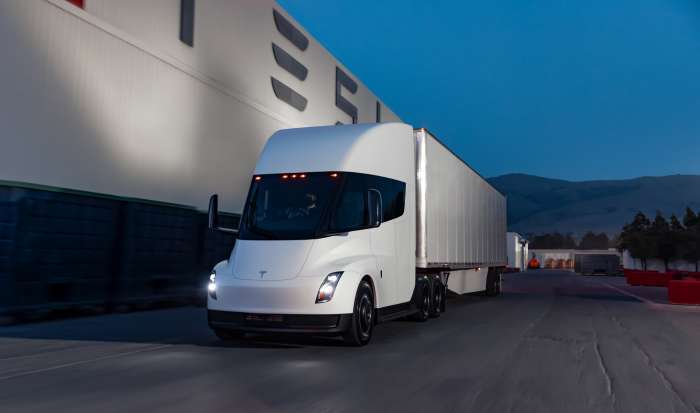The electrification of road transportation using battery-powered electric trucks created some doubts - among some experts - about its feasibility, due to certain limitations of this technology. The large and heavy batteries required to power these vehicles create two challenges to overcome: the first one being that its weight can somehow limit the load each Semi truck can carry; and the second being that recharging times are very long, sometimes not entirely compatible with drivers' resting times as mandated by law, which in turn increases idle times.
These are basically the reasons why many defend hydrogen as the main candidate for the decarbonization of road transport: its lower weight and fast refueling times seem to apparently give it an advantage over battery packs. However, Tesla - the most important manufacturer of electric vehicles in the world - does not agree at all, and for a few years now has opted to invest in the development of an electric Semi truck that aims to become (and somehow already is) a disruptor in this industry sector.
Indeed, the Tesla Semi program manager, Guthrie Gintzler, recently explained to the managers of several different companies the importance of electric trucks to reduce ownership costs and emissions from the transportation sector. The meeting took place during the “Environment, Social, and Governance (ESG) As Driver of Innovation and Value” event at Wharton University. Reducing ownership costs and emissions basically justifies the large investment dedicated to the development of the Semi truck, as per Mr. Gintzler´s remarks.

Guthrie Gintzler joined Tesla back in 2016 and quickly rose through the company ranks to become the head of the Tesla Semi program last year. He has a degree in Applied Mechanical Engineering from the University of Pennsylvania and in Economics, Finance and Business Administration from Wharton. With the delivery of the first units of the electric truck, Gintzler tries to convince his future clients about the viability of his proposal.
In his talk, he explained that the implementation of electric trucks in trucking fleets is easily justifiable: a diesel truck fleet manager looking to reduce costs must think in terms of energy to answer the question of which technology to choose. The best option to do this is with electric trucks since their cost of ownership is way much lower than that of diesel trucks.
He claims that just the top 20 fleet operators in the United States, which operate a significant number of diesel trucks, could reduce emissions by a total of 2.5%. Although these semi-trailers represent around 1% of the vehicles of this type that currently circulate on the roads, they are in fact responsible for almost 40% of the total emissions of the transportation sector.
In addition, private vehicles are actually used only a 5% of the time, approximately; the rest of the time - 95% on average - they remain parked at the office or at home. However, heavy trucks are on the go as long as their driver allows, at least eight hours a day, frequently a lot more; and that, with a much higher energy consumption per mile traveled.

Tesla recently announced a large investment in the Nevada Gigafactory to build new production lines for the Tesla Semi; its goal is to increase capacity to 50,000 Semi trucks per year. Gintzler knows that this is a difficult task because it will require a high volume production of electric class 8 semi-trucks, which does not exist at the moment. Tesla has so far delivered a few dozen trucks, but its production is low-volume since it has only assigned, so far, a small facility located next to the Nevada Gigafactory.
In conclusion, Tesla believes in the investment it has made in electric trucks and is betting on mass production in order to provide the benefits that come with such technology: lower energy costs per mile traveled, fewer emissions, less maintenance, and an overall reduction in ownership costs.
Source: Mack Institute for Innovation Management
All images courtesy of Tesla Inc.
Nico Caballero is the VP of Finance of Cogency Power, specializing in solar energy. He also holds a Diploma in Electric Cars from Delft University of Technology in the Netherlands, and enjoys doing research about Tesla and EV batteries. He can be reached at @NicoTorqueNews on Twitter. Nico covers Tesla and electric vehicle latest happenings at Torque News.





